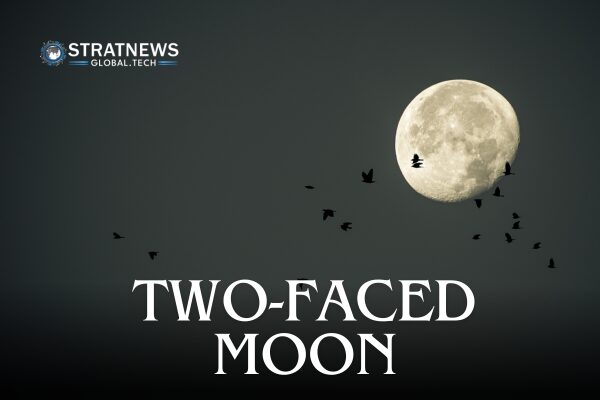New Study Explains Why the Moon Has “Two Faces” — Chang’e-6 Samples Reveal Thermal Asymmetry
The moon’s long-observed “two-faced” nature runs far deeper than its contrasting appearance. New analysis of rock and soil collected by China’s Chang’e-6 lunar mission in 2024 has revealed significant chemical and thermal differences between the moon’s nearside and farside, offering fresh insight into its mysterious geological history.
Cooler Origins Beneath the Moon’s Farside
Scientists examining the Chang’e-6 samples—retrieved from the South Pole-Aitken Basin, the only material ever collected from the moon’s farside—found that the rocks crystallised from lava roughly 2.8 billion years ago at temperatures around 2,000°F (1,100°C). That is about 180°F (100°C) cooler than samples from the nearside, previously obtained by NASA’s Apollo missions and China’s 2020 lunar mission.
“Our results demonstrate the existence of thermal asymmetry between the nearside and farside mantle,” said geoscientist Yang Li of University College London and Peking University, who led the study published in Nature Geoscience. “This takes us one step closer toward understanding the dichotomy of the moon.”
Why the Two Sides Differ So Dramatically
The moon’s nearside, permanently facing Earth, is smoother and dominated by dark volcanic plains formed by ancient lava flows. The farside, by contrast, has a thicker crust, is more mountainous, and heavily cratered, with far fewer volcanic features.
Scientists believe that these differences stem from variations in the moon’s interior composition. The new data indicate that the farside’s mantle contains lower levels of radioactive elements such as uranium, thorium, and potassium—elements that produce heat as they decay. With less internal heat, the farside remained cooler and less volcanically active.
A Clue from a Violent Past
Researchers suspect that the moon’s internal imbalance may have originated from a colossal impact early in its history. A massive asteroid or celestial body may have struck the farside, redistributing denser, heat-producing materials toward the nearside. This event could explain both the thermal differences and the striking contrast in surface features.
The Chang’e-6 probe collected its samples using a scoop and drill after landing in June 2024, returning them safely to Earth in Inner Mongolia. The mission’s success provides scientists with the first tangible evidence to study the farside’s mantle directly, deepening understanding of how the moon evolved after forming 4.5 billion years ago.
Unlocking Lunar Mysteries
Although the moon remains tidally locked—always showing the same face to Earth—the new findings suggest that the thermal imbalance between its hemispheres is unrelated to this gravitational alignment. Instead, it points to deeper compositional and geological causes dating back billions of years.
As scientists continue analysing the Chang’e-6 samples, the mission marks a milestone in uncovering why the moon is quite literally two worlds in one.
with inputs from Reuters


